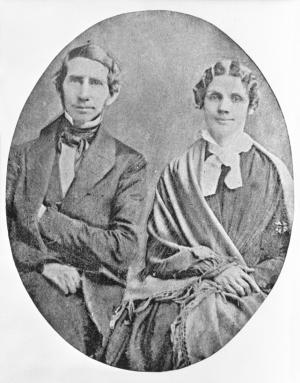 Born in Ohio in 1812, Stephen Riggs was educated at Jefferson College and Western Theological Seminary in Pennsylvania. As a licensed preacher, he was sent by the American Board of Commissioners for Foreign Missions to help Dr. Thomas S. Williamson in his work with the Indians in Minnesota.
Born in Ohio in 1812, Stephen Riggs was educated at Jefferson College and Western Theological Seminary in Pennsylvania. As a licensed preacher, he was sent by the American Board of Commissioners for Foreign Missions to help Dr. Thomas S. Williamson in his work with the Indians in Minnesota.
When the U.S.-Dakota War began, the Hazelwood party came down to the Upper Sioux villages. In the early morning hours of August 19, the Riggs family fled to their Christian Dakota neighbors, who hid them on an island in the Minnesota River, then guided them on their way toward safety that night. Riggs volunteered for service and was made the chaplain to General Sibley's forces. Hazelwood mission was destroyed and when the Dakota were exiled from Minnesota after the war, the missionaries traveled with them where they continued to set up mission stations. Riggs died in Wisconsin in 1883.
Riggs, Stephen R. "Dakota Portraits." Minnesota Free Press [St. Peter] 1858
Riggs, Stephen R. Mary and I: Forty Years with the Sioux. Williamstown, MA: Corner House, 1971.
Primary
Riggs, Stephen R. "Dakota Portraits." Minnesota Free Press [St. Peter] 1858
Riggs, Stephen R. Mary and I: Forty Years with the Sioux. Williamstown, MA: Corner House, 1971.




